In-depth research covering the cryptocurrency field, from altcoins to ETFs, from staking to gaming, etc.
Authors: David Duong & David Han
Compiled by: Deep Tide TechFlow
Key Points
In 2025, the cryptocurrency market will experience transformative growth, continuing to advance maturation and popularization.
Our four major focus areas for 2025 include: macroeconomic conditions, blockchain meta games, disruptive innovation, and upgrades in user experience.
Executive Summary
Looking ahead to 2025, the cryptocurrency market is moving towards a phase of transformative growth. As this asset class gradually matures, institutional adoption continues to rise, and various application scenarios are constantly expanding. Over the past year, the U.S. approved the first spot ETFs, the tokenization of financial products has rapidly developed, and the growth of stablecoins has been significant, gradually integrating into the global payment system.
These achievements have not come easily. They seem to be the culmination of years of effort, but they are likely just the starting point for greater transformations.
Reflecting on a year ago, crypto assets were struggling due to interest rate hikes, regulatory pressures, and an unclear outlook. Today's achievements showcase the resilience of cryptocurrencies, proving that they have become a robust alternative asset class.
From a market perspective, the upward trend in 2024 shows significant differences from previous bull market cycles. For example, the term "Web3" is gradually being replaced by the more fitting "Onchain." At the same time, market investment strategies have shifted from narrative-driven to a greater focus on fundamental analysis, partly due to the widespread participation of institutional investors.
Additionally, Bitcoin's market share has significantly increased, while innovations in decentralized finance (DeFi) continue to expand the application boundaries of blockchain, laying the foundation for a new financial ecosystem. Central banks and financial institutions around the world are also exploring how to leverage crypto technology to enhance the efficiency of asset issuance, trading, and record management.
Looking to the future, the prospects for the cryptocurrency field are promising. Cutting-edge innovations include decentralized peer-to-peer exchanges, prediction markets, and AI agents with built-in crypto wallets. In the institutional space, stablecoins and payment solutions (connecting cryptocurrencies with traditional banking systems), on-chain credit scoring supported unsecured lending, and compliant on-chain capital formation all hold tremendous potential.
Although crypto technology is widely recognized, its complex technical structure still feels unfamiliar to many. However, technological innovations are working to change this situation. An increasing number of projects are focusing on simplifying the blockchain user experience and enhancing the functionality of smart contracts. These advancements will make cryptocurrencies more accessible to new users.
Meanwhile, the U.S. has laid the groundwork for clearer crypto regulations in 2024, a development that may further solidify the position of digital assets in the mainstream financial system in 2025.
With the joint progress of regulation and technology, we expect the cryptocurrency ecosystem to experience significant growth in 2025. Broader adoption will drive the industry closer to its full potential. This year will be a critical juncture, with breakthrough developments potentially laying the foundation for the industry's growth in the coming decades.

Key Theme 1: 2025 Macroeconomic Roadmap
Federal Reserve's Goals and Demands
In 2024, Donald Trump's victory in the U.S. presidential election became the biggest catalyst for the crypto market in the fourth quarter, driving Bitcoin prices up by 4-5 standard deviations compared to the three-month average. However, looking ahead, we believe that the short-term fiscal policy response may not be as important as the long-term direction of monetary policy, especially at a critical decision-making moment for the Federal Reserve.
We expect the Federal Reserve to continue easing monetary policy in 2025, but the specific pace may depend on the extent of the next round of fiscal policy expansion. Tax cuts and tariffs may lead to rising inflation, although the overall Consumer Price Index (CPI) has dropped to 2.7% year-on-year, the core CPI remains as high as 3.3%, exceeding the Federal Reserve's target.
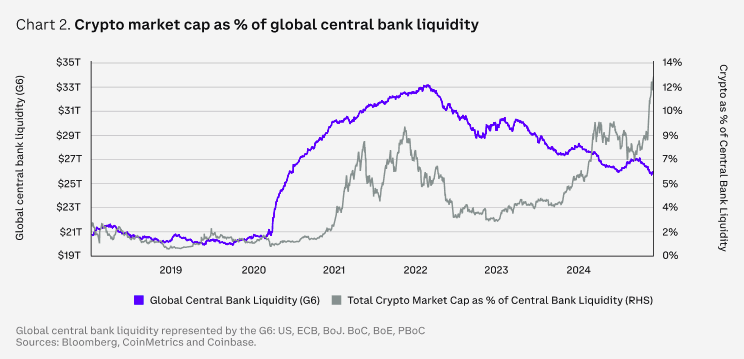
The Federal Reserve's current goal is to achieve "de-inflation," meaning prices continue to rise but at a slower pace, to fulfill its mission of "maximum employment." In contrast, ordinary households hope to see "deflation," meaning prices decrease to alleviate the high cost pressures of the past two years. However, price declines may carry the risk of economic recession, making it less than ideal.
Currently, a soft landing remains the main expectation, supported by lower long-term interest rates and "American exceptionalism 2.0." The Federal Reserve's interest rate cuts are almost a foregone conclusion, and the easing of credit conditions provides a favorable backdrop for cryptocurrency performance in the next 1-2 quarters. Meanwhile, if the next government implements deficit spending policies, this could further boost market risk appetite, benefiting the cryptocurrency market.
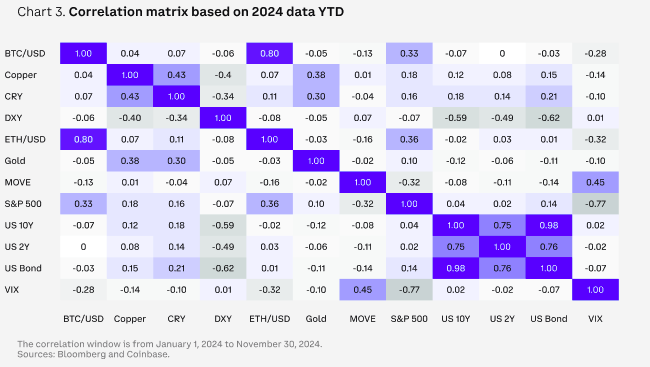
The Most Supportive Congress for Cryptocurrency in U.S. History
After years of policy uncertainty, we believe the next U.S. Congress is likely to bring true regulatory clarity to the cryptocurrency industry. This election has sent a clear signal to Washington, D.C.: public dissatisfaction with the existing financial system is growing, and there is a desire for change. From a market perspective, bipartisan support for cryptocurrency in both the House and Senate means that the regulatory environment in the U.S. may shift from past resistance to a driving force for cryptocurrency development.
A new hotspot is the possibility of a "strategic Bitcoin reserve." In July 2024, following the Bitcoin Nashville conference, Wyoming Senator Cynthia Lummis introduced the “Bitcoin Bill”, while the Pennsylvania legislature proposed to pass the Pennsylvania Bitcoin Strategic Reserve Act. If passed, this bill would allow the state treasurer to invest up to 10% of Pennsylvania's general fund in Bitcoin or other cryptocurrency instruments. Currently, pension funds in Michigan and Wisconsin have begun holding cryptocurrencies or related ETFs, and Florida is also planning to follow suit. However, creating a "strategic Bitcoin reserve" may face legal obstacles, such as whether the Federal Reserve's balance sheet allows for holding such assets.
Meanwhile, the U.S. is not the only country making progress in cryptocurrency regulation. The global demand for cryptocurrencies is also driving competition among countries in regulation. For example, the European Union's Markets in Crypto-Assets Regulation (MiCA) is being implemented in phases, providing a clear operational framework for the industry. Major financial centers such as the UK, UAE, Hong Kong, and Singapore are also actively formulating rules to create a more favorable environment for the innovation and growth of digital assets.
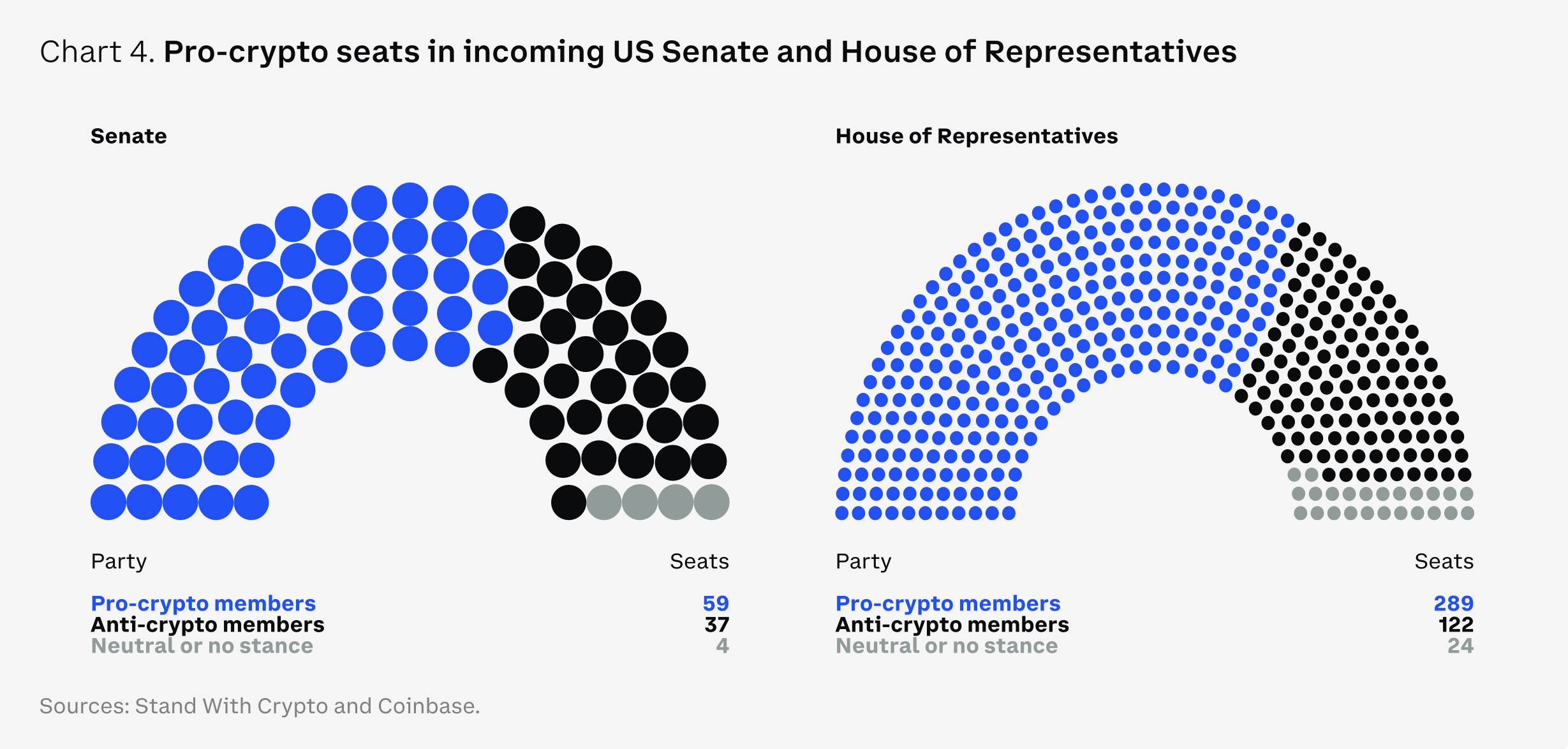
Cryptocurrency ETF 2.0
The approval of spot Bitcoin and Ethereum exchange-traded funds (ETFs) in the U.S. is a significant milestone for the crypto economy. Since their launch (about 11 months ago), these products have attracted $30.7 billion in inflows, far exceeding the $4.8 billion attracted by the SPDR Gold Shares ETF (GLD) in its first year (adjusted for inflation) when it was launched in 2004. According to Bloomberg, this places these ETFs among the top 0.1% of approximately 5,500 new ETFs launched in the past 30 years.
The launch of the ETFs has reshaped the market ecology for Bitcoin (BTC) and Ethereum (ETH), establishing new support for demand. Bitcoin's market dominance has increased from 52% at the beginning of the year to 62% in November 2024. According to the latest 13-F reports, almost all types of institutional investors—including endowments, pension funds, hedge funds, investment advisors, and family offices—are participating in the investment of these products. At the same time, the regulated options launched in November 2024 provide investors with more flexible risk management tools and lower-cost asset exposure.
Looking ahead, the market's focus is on whether ETFs covering more tokens (such as XRP, SOL, LTC, and HBAR) will be launched. However, we believe that these approvals may be limited to a few assets in the short term. In contrast, we are more concerned about whether the SEC will allow staking within ETFs or lift restrictions on cash trading, allowing for physical creation and redemption instead. This change could not only improve the consistency of ETF share prices with net asset value (NAV) but also reduce trading costs and enhance market efficiency.
The current cash-based model can lead to price volatility and tax issues, while physical trading can avoid these problems, providing investors with greater stability and transparency.
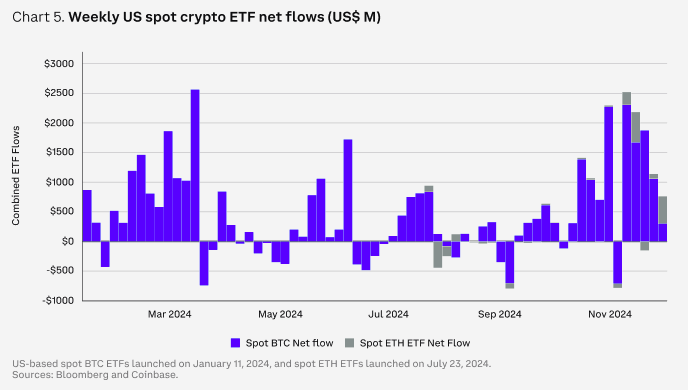
Stablecoins: The "Killer Application" of Cryptocurrency
In 2024, the stablecoin market experienced explosive growth, with a total market capitalization increasing by 48% to reach $193 billion (as of December 1). Market analysts predict that, following the current growth trajectory, the stablecoin market could reach nearly $3 trillion within the next five years. Although this figure seems enormous, it actually only accounts for about 14% of the total U.S. M2 money supply ($21 trillion).
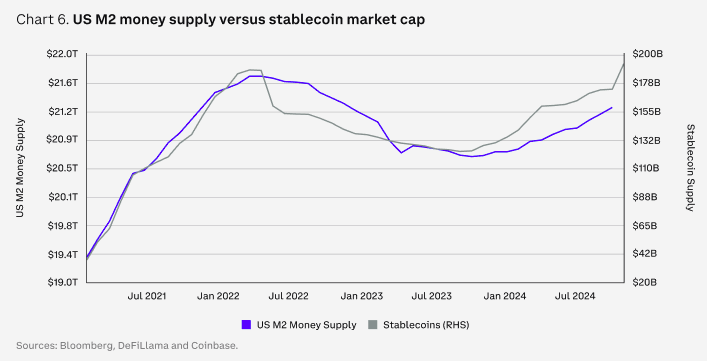
We believe that the next wave of true mainstream adoption of cryptocurrency may come from stablecoins and the payments sector. This also explains the rapid development in this area over the past 18 months. Compared to traditional payment methods, stablecoins offer faster and lower-cost advantages, leading to their increasing application in digital payments and cross-border remittances. Many payment companies are also expanding their stablecoin infrastructure. In the future, the primary use of stablecoins may not be limited to transactions but could extend to global capital flows and commercial payments. However, beyond broader financial applications, the ability of stablecoins to address the U.S. debt burden has also attracted political interest.
As of November 30, 2024, the trading volume in the stablecoin market has approached $27.1 trillion, nearly three times that of the same period in 2023. This includes a significant amount of peer-to-peer (P2P) transfers and cross-border corporate payments. Stablecoins like USDC are being increasingly adopted by businesses and individuals due to their extensive payment platform integration and compliance.
The Tokenization Revolution
In 2024, significant progress was made in the field of tokenization. According to data from rwa.xyz, the market size of tokenized real-world assets (RWA) grew from $8.4 billion at the end of 2023 to $13.5 billion on December 1, 2024, an increase of over 60% (excluding stablecoins). Analysts predict that this sector could grow to between $2 trillion and $30 trillion over the next five years, with a potential growth rate of up to 50 times.
An increasing number of asset management companies and traditional financial institutions, such as BlackRock and Franklin Templeton, are beginning to adopt tokenization of government securities and other traditional assets on permissioned or public blockchains. This technology not only enables near-instant cross-border settlement but also supports round-the-clock trading.
Additionally, companies are exploring the use of tokenized assets as collateral for financial transactions (such as derivatives trading), thereby simplifying operational processes (e.g., margin management) and reducing risk. The application range of RWA is also continuously expanding, from U.S. Treasury bonds and money market funds to private credit, commodities, corporate bonds, real estate, and insurance. We believe that in the future, tokenization will further optimize the construction and management processes of investment portfolios, moving the entire investment process on-chain, although achieving this vision may take several more years.
Of course, tokenization also faces some challenges, such as liquidity fragmentation across multiple chains and regulatory barriers. However, significant progress has been made in both areas in recent years. We expect tokenization to be a gradual process, but its advantages have been widely recognized. The current stage provides valuable experimental opportunities for companies, helping them stay ahead in the wave of technological innovation.
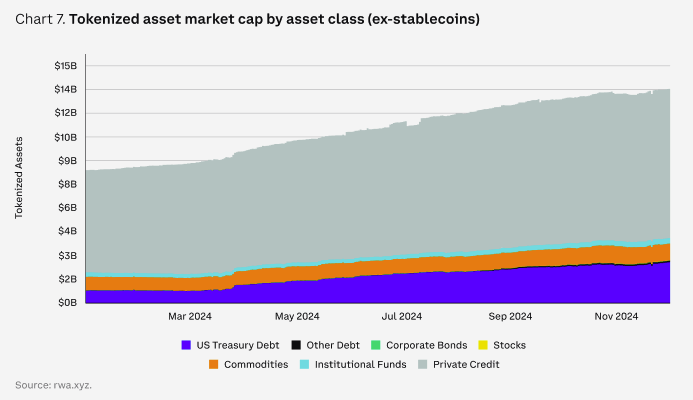
The Revival of DeFi
In the last market cycle, decentralized finance (DeFi) suffered a heavy blow. Some projects attracted liquidity through token incentives but offered unsustainable high yields. With the market adjustment, a more robust DeFi ecosystem is now forming, characterized by applications that are closer to actual needs and transparent governance structures.
We believe that changes in the U.S. regulatory environment could become a key driving force for the revival of DeFi. For example, the establishment of a stablecoin regulatory framework and the provision of clear pathways for traditional institutional investors to participate in DeFi. The synergy between on-chain and off-chain capital markets continues to strengthen, with the trading volume of decentralized exchanges now accounting for 14% of centralized exchanges, a significant increase from 8% in January 2023. At the same time, the possibility of decentralized applications (dApps) sharing protocol revenue with token holders is also increasing.
Moreover, the potential of DeFi has also received official recognition. In October 2024, Federal Reserve Governor Christopher Waller pointed out that DeFi can complement centralized finance (CeFi), and distributed ledger technology (DLT) can improve the record-keeping efficiency of CeFi, while smart contracts can enhance its functionality. He also mentioned that stablecoins have potential in payments and as "safe assets," but need to address risks such as bank runs and illicit financing. All these signs indicate that DeFi is transcending its traditional crypto user base and gradually establishing closer ties with traditional finance (TradFi).
Theme Two: Disruptive Paradigms
Telegram Trading Bots: Hidden Profit Centers
Beyond stablecoins and native L1 trading fees, Telegram trading bots have become the most profitable sector in the cryptocurrency field in 2024. In terms of net protocol revenue, they have even surpassed top DeFi protocols like Aave and MakerDAO (now known as Sky). This phenomenon is primarily attributed to the growth in trading activity and the explosive performance of meme tokens. In fact, meme coins are the best-performing cryptocurrency sector in 2024 (measured by total market capitalization growth), with meme coin trading activity experiencing a significant surge in the fourth quarter of 2024 (especially on Solana DEX).
Telegram trading bots provide users with a simple chat-based interface for trading these tokens. Users can create custodial wallets directly in the chat window and manage funds and execute trades through buttons and text commands. As of December 1, 2024, the trading focus of most bot users is on Solana tokens, accounting for as much as 87%, followed by Ethereum (8%) and Base (4%). It is worth noting that most of these bots are largely unrelated to the open network (TON) integrated into the Telegram native wallet. High-revenue bots like Photon, Trojan, and BONKbot are primarily deeply integrated with the Solana network, reflecting the preferences of their users.
Similar to other trading interfaces, Telegram bots charge a certain percentage fee per trade, up to 1% of the transaction amount. However, due to the inherent volatility of the assets being traded by users, these higher fees do not seem to significantly impact users. As of December 1, 2024, the highest-earning bot, Photon, has accumulated an annual revenue of $210 million, nearly matching the $227 million of Solana's largest meme coin issuance platform, Pump. Additionally, other well-known bots, Trojan and BONKbot, have generated revenues of $105 million and $99 million, respectively. In contrast, Aave's net protocol revenue in 2024 was only $74 million.
The appeal of Telegram trading bots lies in their convenience, especially for trading tokens that are not yet listed on exchanges. Additionally, these bots offer extra features such as "sniping" new tokens and price alerts. Data shows that nearly 50% of Trojan users repeat usage over four days or longer, with an average revenue contribution of $188 per user. Although competition among bots may reduce trading fees in the future, we expect Telegram bots to continue being a major source of profit in the crypto space in 2025.
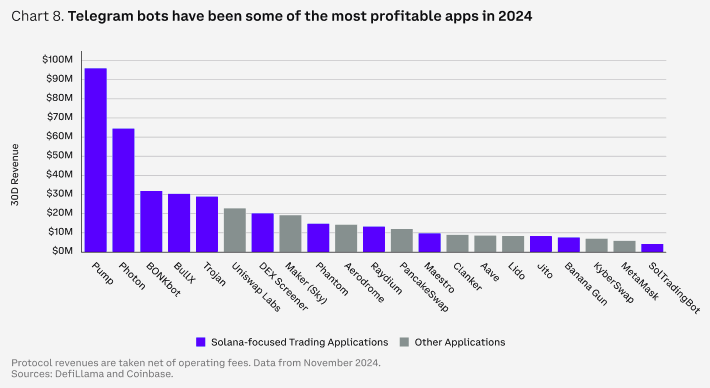
Prediction Markets: Showcasing Blockchain's Potential
During the 2024 U.S. election cycle, prediction markets emerged as one of the biggest winners. Platforms like Polymarket significantly outperformed traditional polling data, which had predicted a much tighter race, while the actual results were quite different. This achievement is not only a victory for prediction markets but also for blockchain technology. Blockchain-based prediction markets demonstrate significant advantages over traditional polls, becoming a unique application scenario for blockchain technology. These markets not only provide higher transparency, trading speed, and global accessibility, but their blockchain foundation also supports decentralized dispute resolution and outcome-based automatic payment settlements, making them clearly superior to non-blockchain versions.
While some believe that the popularity of prediction markets may wane after the elections, we have already seen their application extend to areas such as sports and entertainment. In the financial sector, prediction markets have proven to more accurately reflect market sentiment regarding economic data (such as inflation and non-farm payroll data) than traditional surveys, giving them ongoing value and relevance beyond elections.
Gaming: From Player Attraction to Market Mainstream
Gaming has always been an important application area for cryptocurrency technology due to the immense potential of on-chain assets and trading markets. However, many crypto games have faced challenges in cultivating loyal players. This is primarily because many players are motivated by profit rather than pure entertainment. Additionally, many crypto games rely on web browser distribution and require users to set up self-custody wallets, limiting their audience primarily to crypto enthusiasts rather than a broader mainstream player base.
However, compared to the previous cycle, crypto-integrated games have made significant progress. Developers are no longer pursuing the extreme idea of being "fully on-chain," but are selectively placing certain assets on-chain to unlock new features without compromising the core gaming experience. Many developers are also beginning to view blockchain as a supplementary tool rather than the core selling point of their marketing.
For example, Off the Grid is a first-person shooter and battle royale game whose blockchain component (Avalanche subnet) was still in testing when it launched, yet the game itself became the number one free game on Epic Games. The main attraction for players lies in its unique gameplay rather than the blockchain tokens or trading market. Furthermore, this game has broadened the distribution channels for crypto-integrated games, now available on Xbox, PlayStation, and PC platforms (via the Epic Games Store).
Mobile platforms have also become an important distribution channel for crypto-integrated games, including native apps and embedded applications (such as Telegram mini-games). Many mobile games selectively adopt blockchain components while running most activities on centralized servers. These games typically do not require setting up external wallets, significantly lowering the entry barrier for users and allowing players unfamiliar with cryptocurrency to easily get started.
In the future, we believe the boundaries between crypto games and traditional games will further blur. Upcoming mainstream "crypto games" may lean more towards crypto integration rather than being entirely crypto-centric. Their focus will be on providing high-quality gaming experiences and broad distribution channels rather than simply a "play-to-earn" mechanism. However, while this trend may promote the adoption of crypto technology, whether it will directly increase demand for liquidity tokens remains to be seen. In-game currencies may continue to remain isolated across different games, and regular players may not welcome external investors' interference in the game economy.
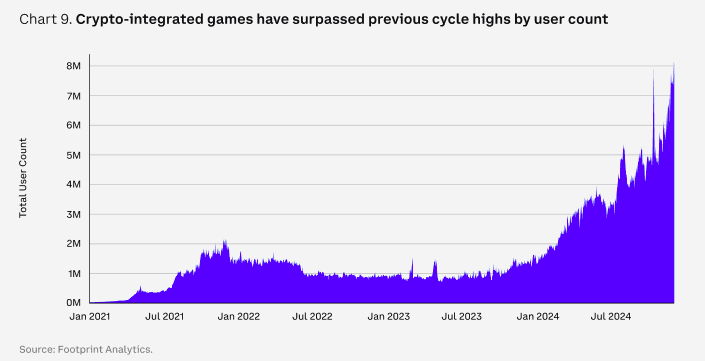
Decentralized Realities: The Potential and Limitations of DePIN
Decentralized Physical Infrastructure Networks (DePIN) hold promise for solving distribution challenges in the real world by guiding the creation of resource networks. Theoretically, DePIN can overcome common initial economies of scale issues in such projects. Currently, DePIN projects cover multiple fields, from computing power to cellular networks to energy, creating a more resilient and cost-effective way to aggregate resources.
Helium is a representative case of DePIN. By distributing tokens to individuals providing local cellular hotspots, Helium successfully built a network covering major cities in the U.S., Europe, and Asia without the need to invest in building cellular towers or significant upfront capital. Instead, early participants are incentivized through the rights to earn network tokens.
However, we believe that the long-term revenue and sustainability of such networks need to be evaluated on a case-by-case basis. Not all industries are suitable for adopting decentralized strategies, and certain pain points may be limited to specific sectors. In our view, there may be significant differences between the network adoption rates, token utility, and revenue generation of DePIN projects.
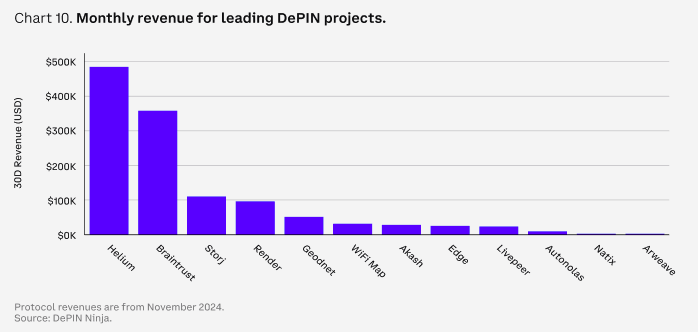
Artificial Intelligence: Exploring Real Value
Artificial Intelligence (AI) continues to capture investor attention in both traditional and crypto markets. However, the impact of AI in the crypto space is diverse, and its narrative is constantly evolving. Initially, it was believed that blockchain technology could address the authenticity issues of AI-generated content and user data (e.g., verifying data sources). Subsequently, AI-driven user intent recognition frameworks were proposed as a way to improve the crypto user experience. The focus then shifted to decentralized AI model training and computing networks, as well as crypto-driven data generation and collection. Recently, the market's focus has shifted to autonomous AI agents that can control crypto wallets and interact through social media.
Currently, the overall impact of AI on the crypto industry remains unclear, as evidenced by the rapid changes in narrative. However, this uncertainty has not diminished the potential for AI to bring transformative changes to the crypto industry. With ongoing breakthroughs in AI technology and improvements in user-friendliness for non-technical users, we believe more innovative application scenarios will emerge in the future.
The biggest challenge lies in how these technological changes can translate into lasting value between liquidity tokens and company equity. For example, many AI agents operate on traditional technology frameworks, and their recent "market attention" has shifted more towards meme tokens rather than the underlying technological infrastructure. Although prices of liquidity tokens related to infrastructure have risen, the growth in usage typically lags behind price increases. This disconnect between price and network metrics, combined with investors' rotational focus on AI meme tokens, reflects that the market has yet to form a consensus on how to leverage crypto to capture AI growth.
Theme Three: Meta Games of Blockchain
Multi-Chain Ecosystem or Zero-Sum Competition?
Since the last bull market cycle, the popularity of alternative Layer-1 (L1) networks has once again become an important theme. Emerging networks are increasingly competing through lower transaction costs, redesigned execution environments, and minimized latency. Nevertheless, we believe the L1 space has expanded to a point where there is now an oversupply of general block space, even though high-value block space remains scarce.
In other words, additional block space itself is not necessarily more valuable. However, a vibrant protocol ecosystem, combined with an active community and dynamic crypto assets, can still allow certain blockchains to achieve fee premiums. For example, Ethereum, despite not having increased its mainnet execution capacity since 2021, remains the center of high-value DeFi activity.
Nonetheless, we believe investors are still attracted to the differentiated ecosystems that new networks may form, even as the barriers to differentiation are rising. High-performance chains like Sui, Aptos, and Sei are competing for market attention with Solana, while the upcoming Monad is also seen as a strong competitor for developers.
Historically, trading on decentralized exchanges (DEX) has been the largest driver of on-chain fees, requiring strong user onboarding, wallets, interfaces, and capital support to create a growing cycle of activity and liquidity. This concentration of activity often leads to a winner-takes-all situation among different chains. However, we believe the future may still be multi-chain, as different blockchain architectures offer unique advantages to meet various needs. While application chains and Layer-2 solutions can provide customized optimizations and lower costs for specific use cases, a multi-chain ecosystem allows for specialization while still benefiting from the broader network effects and innovations of the blockchain space.
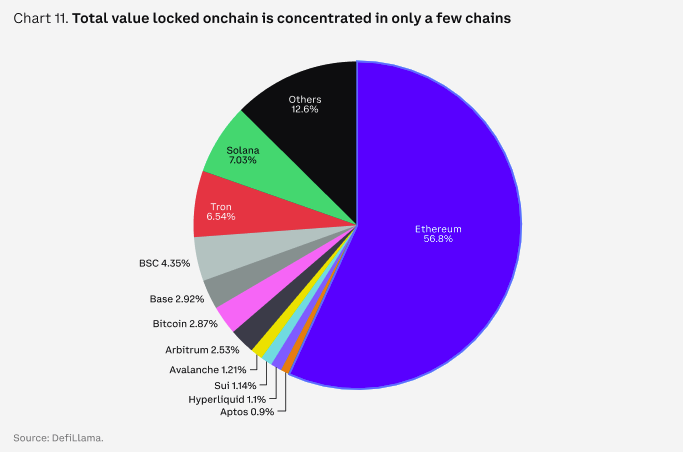
The Upgrade Path of Layer-2
Despite the exponential scalability of Layer-2 (L2), the debate surrounding Ethereum's Rollup-centric roadmap continues. Criticisms include the "extractive" nature of L2 on L1 activity, leading to liquidity fragmentation and a fragmented user experience. In particular, L2 is seen as the root cause of the decline in Ethereum network fees and the "ultrasound money" narrative. New focal points in the L2 debate also include the trade-offs of decentralization, different virtual machine environments (which may lead to EVM fragmentation), and the differences between "based" and "native" Rollups.
Nevertheless, we believe that L2 has achieved significant success in terms of increasing block space and reducing costs. In March 2024, Ethereum's Dencun (Deneb+Cancun) upgrade introduced blob transactions, reducing the average cost of L2 by over 90% and driving a tenfold increase in Ethereum L2 activity. Furthermore, we believe that allowing various execution environments and architectures to experiment within the ETH ecosystem is a long-term advantage of the L2 centralization approach.
This roadmap also brings short-term trade-offs. For example, interoperability across Rollups and the overall user experience have become more complex, especially for newcomers who may not fully understand the differences between ETH on different L2s or how to bridge between them. Although the speed and cost of bridging have improved, we believe that the necessity for users to interact with bridges diminishes the overall quality of the on-chain experience.
While this is a current issue, the community is actively exploring various solutions to address user experience challenges, such as (1) superchain interoperability within the Optimism ecosystem, (2) real-time proofs and super transactions for zkRollups, (3) Rollup-based sequencers, (4) resource locking, and (5) sequencer networks. Of course, these challenges primarily focus on improvements at the infrastructure and network layers, which may take time to manifest at the user interface level.
Meanwhile, the growing Bitcoin L2 ecosystem appears more challenging to navigate, as there are no unified Rollup security standards and roadmaps. In contrast, Solana's "network expansion" tends to be application-specific, potentially causing less disruption to current user workflows. Overall, L2 is gradually being implemented across most major crypto ecosystems, although there are significant differences in its form.
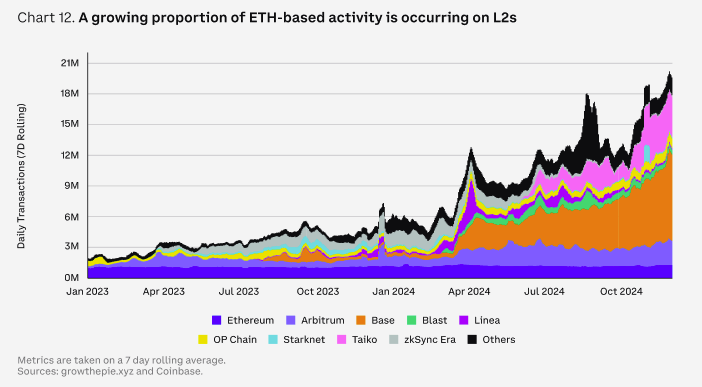
Everyone Can Have Their Own Blockchain
As the technical barriers to deploying customized blockchain networks continue to lower, more applications and enterprises are beginning to build blockchains that they can control independently. Major DeFi protocols like Aave and Sky (formerly MakerDAO) have explicitly stated their goal of launching independent chains in their long-term development plans, while the Uniswap team has also announced plans to launch a Layer-2 chain focused on DeFi. Even some traditional companies have joined this trend, such as Sony announcing the launch of a new chain called Soneium.
As blockchain infrastructure technology matures and becomes more commoditized, we believe the appeal of owning block space is increasing, especially for regulated institutions or scenarios with specific application needs. Meanwhile, the technology stack supporting this trend is also evolving. In the past cycle, application-centric blockchains typically relied on Cosmos or Polkadot Substrate SDK. Now, the rise of the "Rollup as a Service (RaaS)" industry, with companies like Caldera and Conduit, is helping more projects quickly launch their own Layer-2 chains. These platforms provide convenient service integration through their integrated marketplaces. Similarly, Avalanche's managed blockchain service AvaCloud has simplified the creation process for custom subnets, potentially further driving its adoption.
The rapid growth of modular chains may also significantly increase the demand for Ethereum Blob space while promoting the development of other data availability solutions (such as Celestia, EigenDA, and Avail). Since early November, Ethereum's Blob usage has reached saturation (three blobs per block), representing an increase of over 50% compared to mid-September. Nevertheless, as existing Layer-2 networks (like Base) continue to expand throughput and new Layer-2s come online, demand is still showing a sustained upward trend. The upcoming Pectra upgrade, expected in the first quarter of 2025, may increase the target number of blobs from three to six, further alleviating demand pressure.
Theme Four: User Experience
Optimizing User Experience
In our view, a simple and user-friendly experience is one of the key factors driving the widespread adoption of crypto technology. Although the crypto industry has historically focused on technical details due to its "cypherpunk" background, we believe the emphasis is rapidly shifting towards simplifying the user experience. In particular, the entire industry is working to hide the complexity of crypto technology in the background of applications. Some of the latest technological breakthroughs are driving this shift, such as the adoption of account abstraction technology, which smooths the onboarding process for users, and the reduction of cumbersome signing operations through session keys.
The popularization of these technologies will make security components in crypto wallets (such as mnemonic phrases and recovery keys) "invisible" to most users, similar to today's seamless security experiences on the internet (like HTTPS, OAuth, and Passkey). In fact, we expect that by 2025, Passkey onboarding and in-app wallet integration will become a major trend. Current examples include the Passkey onboarding feature of Coinbase's smart wallet and Google's integrated login solutions for Tiplink and Sui Wallet.
However, we believe that the complexity of cross-chain architectures will remain a major challenge for crypto user experience in the short term. Although the abstraction of cross-chain architectures remains an important topic of research in the community at the network and infrastructure levels (e.g., ERC-7683), these technologies are still far from front-end applications. Improvements in this area require dual optimization at the smart contract application layer and wallet layer. Protocol upgrades are crucial for unifying liquidity, while improvements in wallets need to provide users with a more intuitive operational experience. We believe that while current industry research and discussions are primarily focused on the protocol layer, wallet optimization will be more important for driving user adoption in the long run.
The Dominance of User Interface
In our view, the key shift in cryptocurrency user experience will come from optimizing interface design to further strengthen relationships with users. This transformation is primarily reflected in two aspects. First is the improvement of the experience of independent wallets. Today, the onboarding process for users has become more streamlined, better meeting their practical needs. At the same time, directly integrated features within wallets (such as token swapping and lending) allow users to perform operations within a familiar ecosystem, thereby increasing user retention.
Second is the strategy of integrating wallets to hide the complexity of blockchain technology in the background. This strategy is particularly common in scenarios such as trading tools, games, on-chain social interactions, and membership applications. For example, users can register accounts using familiar methods like Google or Apple OAuth, and the system will automatically configure a wallet for them. Once online, the user's on-chain transactions are paid for by a "payer," with these costs ultimately borne by the application operator. This model presents a new challenge: applications need to ensure that the revenue generated by each user can cover the costs of their on-chain operations. Although these costs are gradually decreasing as blockchain technology expands, it also prompts developers to rethink which data truly needs to be submitted on-chain.
Overall, the future competition in the cryptocurrency space will revolve around attracting and retaining users. As reflected in the average revenue per user (ARPU) of Telegram trading bots, cryptocurrency traders are relatively less sensitive to price compared to traditional financial users. We expect that in the coming year, how to "own user relationships" will become a key focus for protocols beyond the trading space.
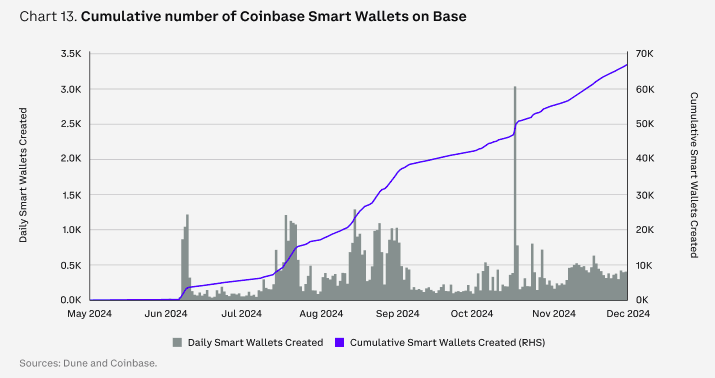
Decentralized Identity
As the regulatory environment becomes clearer and more assets are tokenized off-chain, simplifying Know Your Customer (KYC) and Anti-Money Laundering (AML) processes is becoming increasingly important. For example, some assets are only open to qualified investors in specific regions, making identity verification and qualification validation core elements of future on-chain experiences.
In our view, the construction of decentralized identity mainly includes two key components.
The first is the creation of on-chain identities themselves. Ethereum Name Service (ENS) provides a standard that maps human-readable ".eth" names to one or more cross-chain wallet addresses. Similar services have emerged on other networks, such as Basenames and Solana Name Service. As traditional payment giants like PayPal and Venmo begin to support ENS address resolution, the speed of adoption for these on-chain identity services is accelerating.
The second is to add attributes to on-chain identities. These attributes include KYC verification and jurisdiction information for other protocols to view in order to ensure compliance. The Ethereum Attestation Service is at the core of this technology, providing entities with a flexible way to assign specific attributes to other wallets. These attributes are not limited to KYC and can be expanded based on different needs. For example, Coinbase uses this service to verify whether a wallet is associated with a user of a Coinbase trading account and to confirm whether the user is located in a specific jurisdiction. Some new permissioned lending markets based on Base are also using this service to verify on-chain identities related to real-world assets.
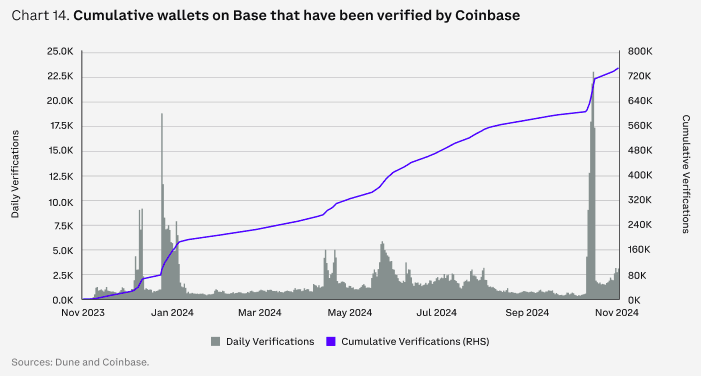
免责声明:本文章仅代表作者个人观点,不代表本平台的立场和观点。本文章仅供信息分享,不构成对任何人的任何投资建议。用户与作者之间的任何争议,与本平台无关。如网页中刊载的文章或图片涉及侵权,请提供相关的权利证明和身份证明发送邮件到support@aicoin.com,本平台相关工作人员将会进行核查。




